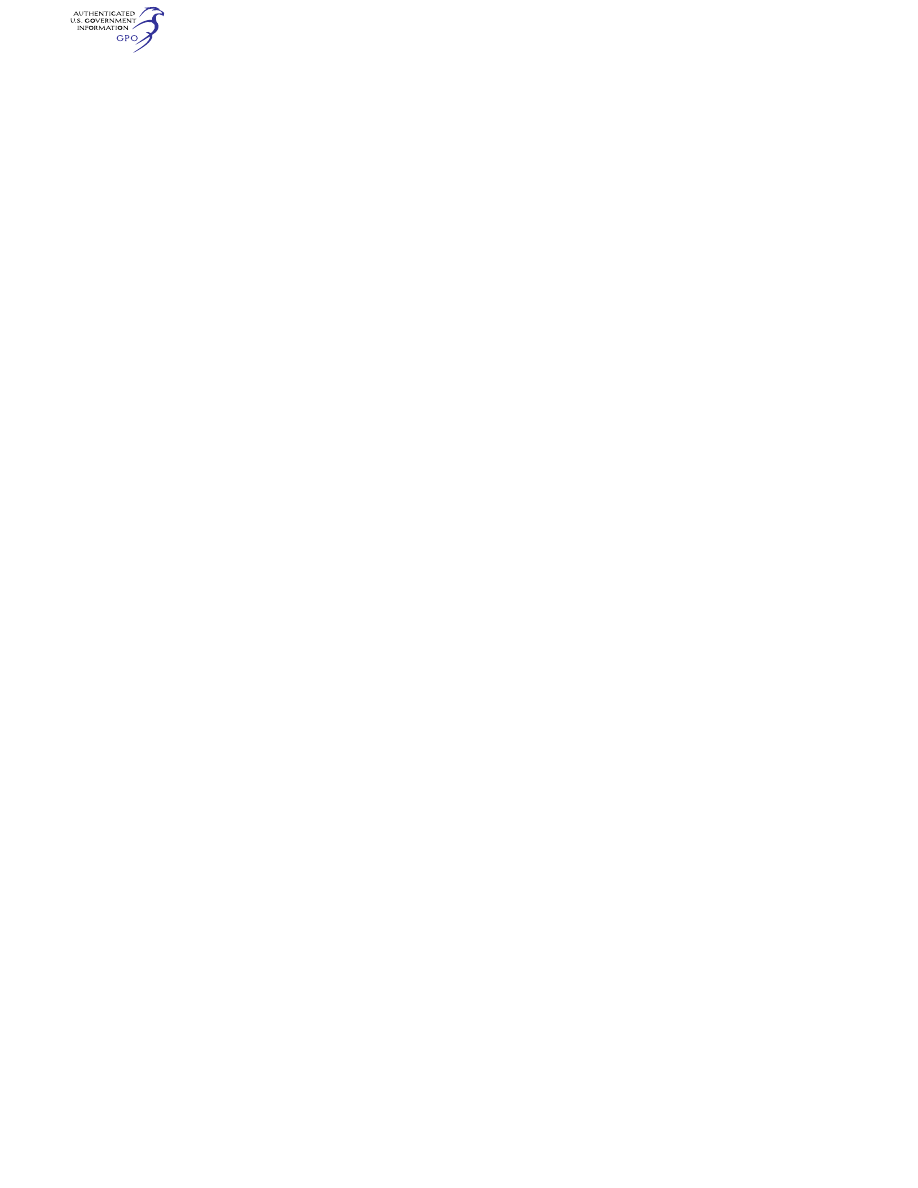
581
Federal Aviation Administration, DOT
§ 29.64
point in the takeoff path at which the
rotorcraft is 1,000 feet above the take-
off surface and compliance with
§ 29.67(a)(2) is shown. In addition—
(1) The requirements of § 29.59(a)
must be met;
(2) While attaining V
TOSS
and a posi-
tive rate of climb, the rotorcraft may
descend below the level of the takeoff
surface if, in so doing and when clear-
ing the elevated heliport edge, every
part of the rotorcraft clears all obsta-
cles by at least 15 feet;
(3) The vertical magnitude of any de-
scent below the takeoff surface must be
determined; and
(4) After attaining V
TOSS
and a posi-
tive rate of climb, the landing gear
may be retracted.
(b) The scheduled takeoff weight
must be such that the climb require-
ments of § 29.67 (a)(1) and (a)(2) will be
met.
(c) Takeoff distance will be deter-
mined in accordance with § 29.61.
[Doc. No. 24802, 61 FR 21899, May 10, 1996; 61
FR 33963, July 1, 1996]
§ 29.61
Takeoff distance: Category A.
(a) The normal takeoff distance is
the horizontal distance along the take-
off path from the start of the takeoff to
the point at which the rotorcraft at-
tains and remains at least 35 feet above
the takeoff surface, attains and main-
tains a speed of at least V
TOSS
, and es-
tablishes a positive rate of climb, as-
suming the critical engine failure oc-
curs at the engine failure point prior to
the takeoff decision point.
(b) For elevated heliports, the take-
off distance is the horizontal distance
along the takeoff path from the start
of the takeoff to the point at which the
rotorcraft attains and maintains a
speed of at least V
TOSS
and establishes a
positive rate of climb, assuming the
critical engine failure occurs at the en-
gine failure point prior to the takeoff
decision point.
[Doc. No. 24802, 61 FR 21899, May 10, 1996]
§ 29.62
Rejected takeoff: Category A.
The rejected takeoff distance and
procedures for each condition where
takeoff is approved will be established
with—
(a) The takeoff path requirements of
§§ 29.59 and 29.60 being used up to the
TDP where the critical engine failure
is recognized and the rotorcraft is land-
ed and brought to a complete stop on
the takeoff surface;
(b) The remaining engines operating
within approved limits;
(c) The landing gear remaining ex-
tended throughout the entire rejected
takeoff; and
(d) The use of only the primary con-
trols until the rotorcraft is on the
ground. Secondary controls located on
the primary control may not be used
until the rotorcraft is on the ground.
Means other than wheel brakes may be
used to stop the rotorcraft if the means
are safe and reliable and consistent re-
sults can be expected under normal op-
erating conditions.
[Doc. No. 24802, 61 FR 21899, May 10, 1996, as
amended by Amdt. 29–44, 64 FR 45337, Aug. 19,
1999]
§ 29.63
Takeoff: Category B.
The horizontal distance required to
take off and climb over a 50-foot obsta-
cle must be established with the most
unfavorable center of gravity. The
takeoff may be begun in any manner
if—
(a) The takeoff surface is defined;
(b) Adequate safeguards are main-
tained to ensure proper center of grav-
ity and control positions; and
(c) A landing can be made safely at
any point along the flight path if an
engine fails.
[Doc. No. 5084, 29 FR 16150, Dec. 3, 1964, as
amended by Amdt. 29–12, 41 FR 55471, Dec. 20,
1976]
§ 29.64
Climb: General.
Compliance with the requirements of
§§ 29.65 and 29.67 must be shown at each
weight, altitude, and temperature
within the operational limits estab-
lished for the rotorcraft and with the
most unfavorable center of gravity for
each configuration. Cowl flaps, or other
means of controlling the engine-cool-
ing air supply, will be in the position
that provides adequate cooling at the
temperatures and altitudes for which
certification is requested.
[Doc. No. 24802, 61 FR 21900, May 10, 1996]
VerDate Sep<11>2014
09:06 Jun 28, 2024
Jkt 262046
PO 00000
Frm 00591
Fmt 8010
Sfmt 8010
Y:\SGML\262046.XXX
262046
jspears on DSK121TN23PROD with CFR